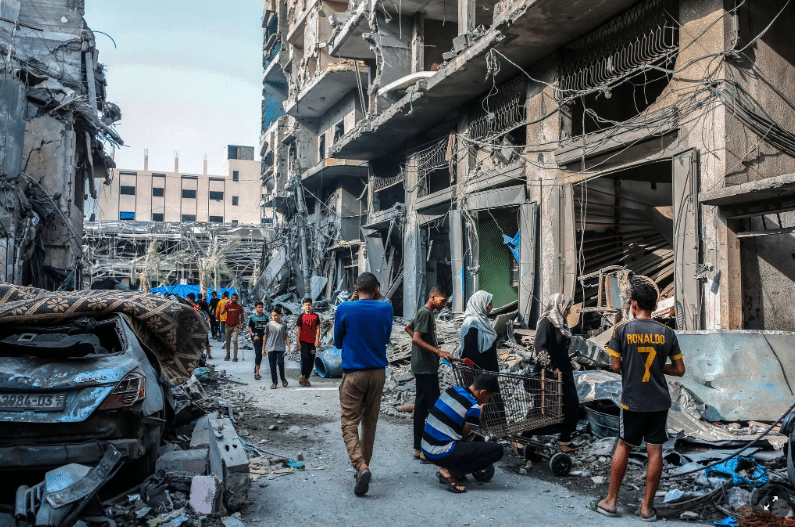A ground invasion in Gaza could produce some of the fiercest street-to-street fighting since World War II.
Heavy fire from rooftops and booby-trapped apartments. Armor-piercing projectiles blowing up troop carriers. Fighters blending in with civilians, launching drone ambushes, or surging from tunnels full of enough ammunition, food and water to sustain a long war.
As the Israeli Army gathers tanks at the Gaza border for a threatened invasion aimed at crushing Hamas, experts are warning that the country’s troops could face some of the fiercest street-to-street combat since World War II in Gaza City and other densely packed areas.
Urban warfare studies and American officials offer dire comparisons to Iraq: Think of Falluja in 2004, the most intense battles that American troops had faced since Vietnam, or the nine-month fight to defeat the Islamic State in Mosul in 2016, which led to 10,000 civilian deaths. Then multiply the destructive toll, possibly exponentially.
Hamas has three to five times as many fighters — perhaps 40,000 in all — as the Islamic State had in Mosul. It can draw reserves from a young, restive population, and has international support from countries like Iran. Even on its own, Hamas’s leadership has had years to prepare for battle across Gaza, including in city streets, where the superiority of tanks and precise munitions can be stymied by guerrilla tactics.
“It’s going to be ugly,” said Lt. Col. Thomas Arnold, a U.S. Army strategist who has published studies on urban operations in the Middle East. “Cities are the devil’s playground — they make everything infinitely more difficult.”
Benjamin Netanyahu, Israel’s prime minister, has vowed to “demolish Hamas.” Without sharply defining what that means, he pledged to remove the group from Gaza after its Oct. 7 attack on Israel killed 1,400 people and led to the kidnapping of more than 200 others.
But Gaza, heavily urbanized, with Hamas deeply entrenched, is an especially complex battlefield. Concerned about the challenges ahead, the Biden administration has sent senior military officers to provide advice to the Israelis, based on their own experiences in Iraq, while pressing Israel to delay the invasion, to leave more time to negotiate the release of hostages taken by Hamas and to deliver more humanitarian aid. American officials worry that Israel lacks a plan with clear, achievable objectives that would prevent an enormous loss of life among Gaza’s more than two million Palestinian civilians.
“I’ve encouraged them to conduct their operations in accordance with the law of war,” Defense Secretary Lloyd J. Austin III said on Sunday.
With history as a guide, three factors would most likely shape a ground war in Gaza’s cities: the urban environment, the interaction between fighters and civilians, and political pressures.
Read the full article at The New York Times.
View

